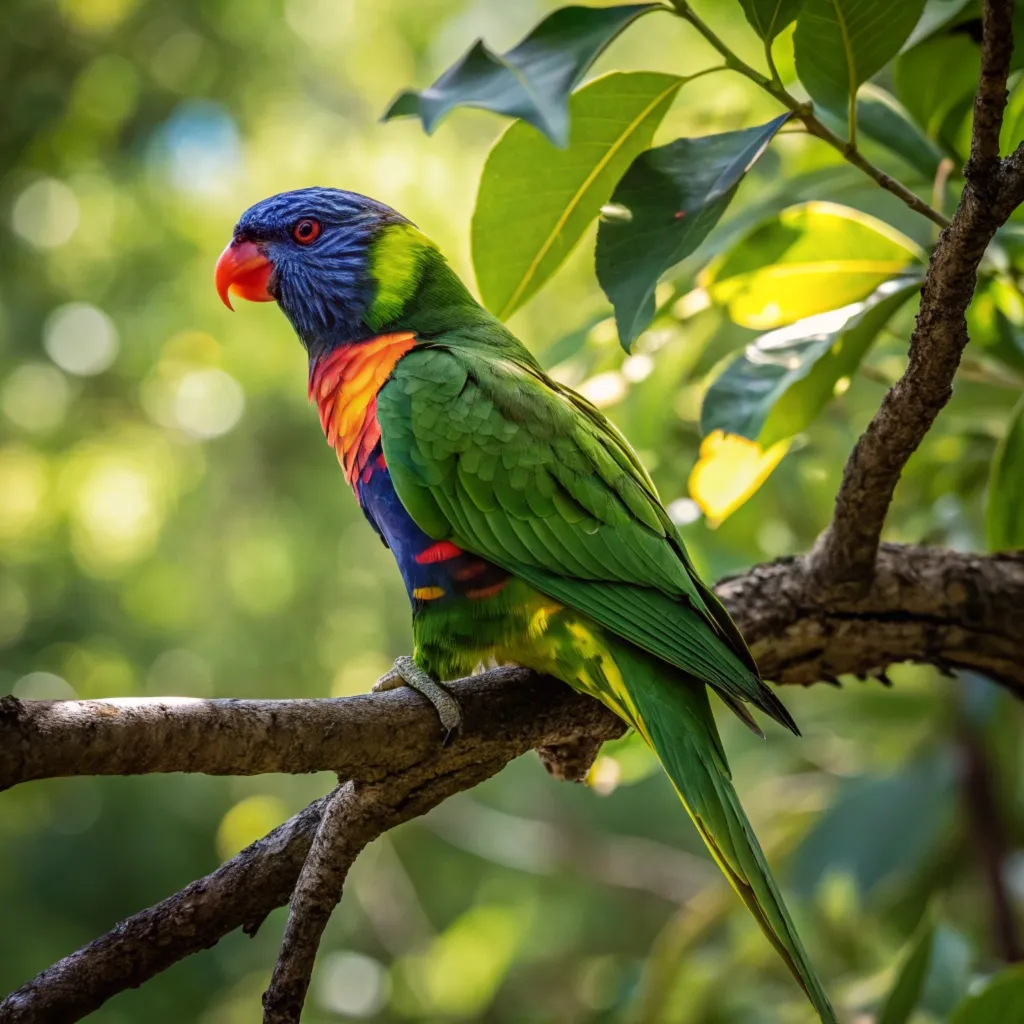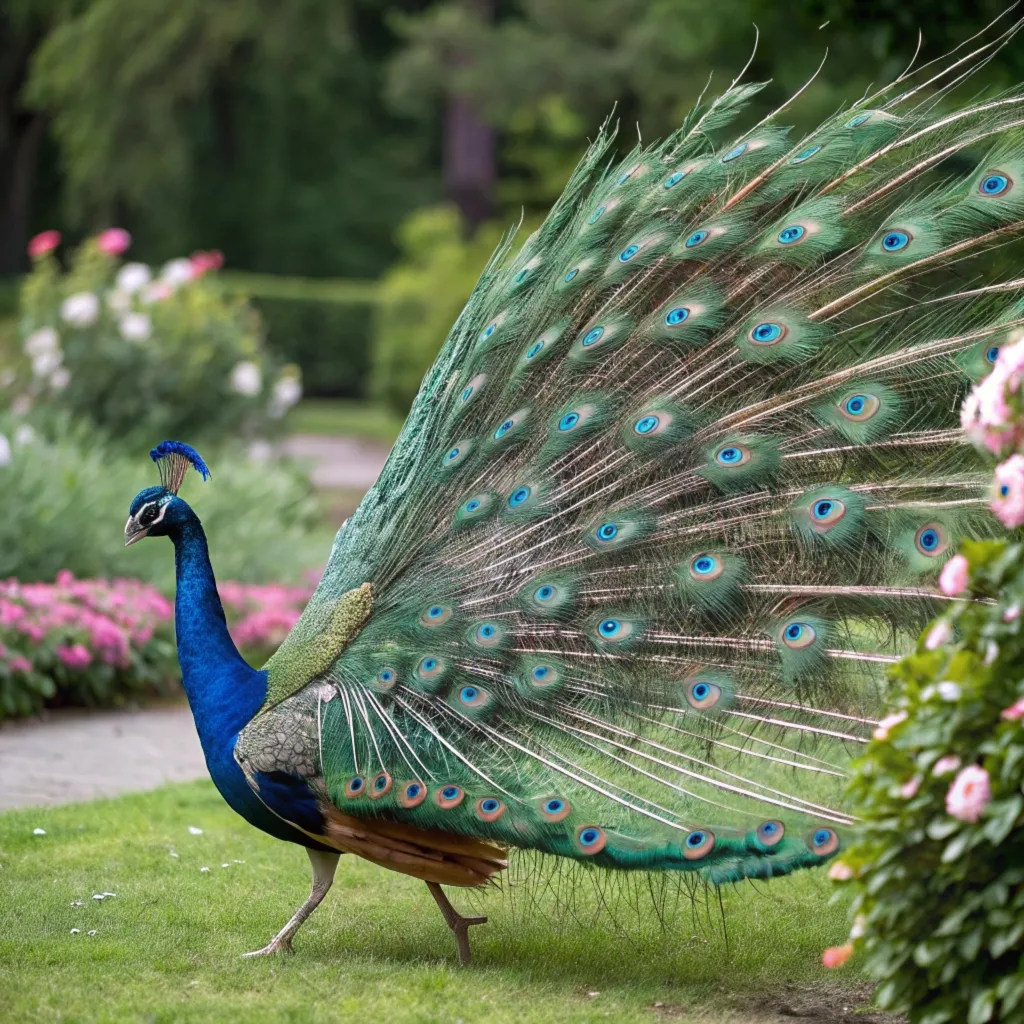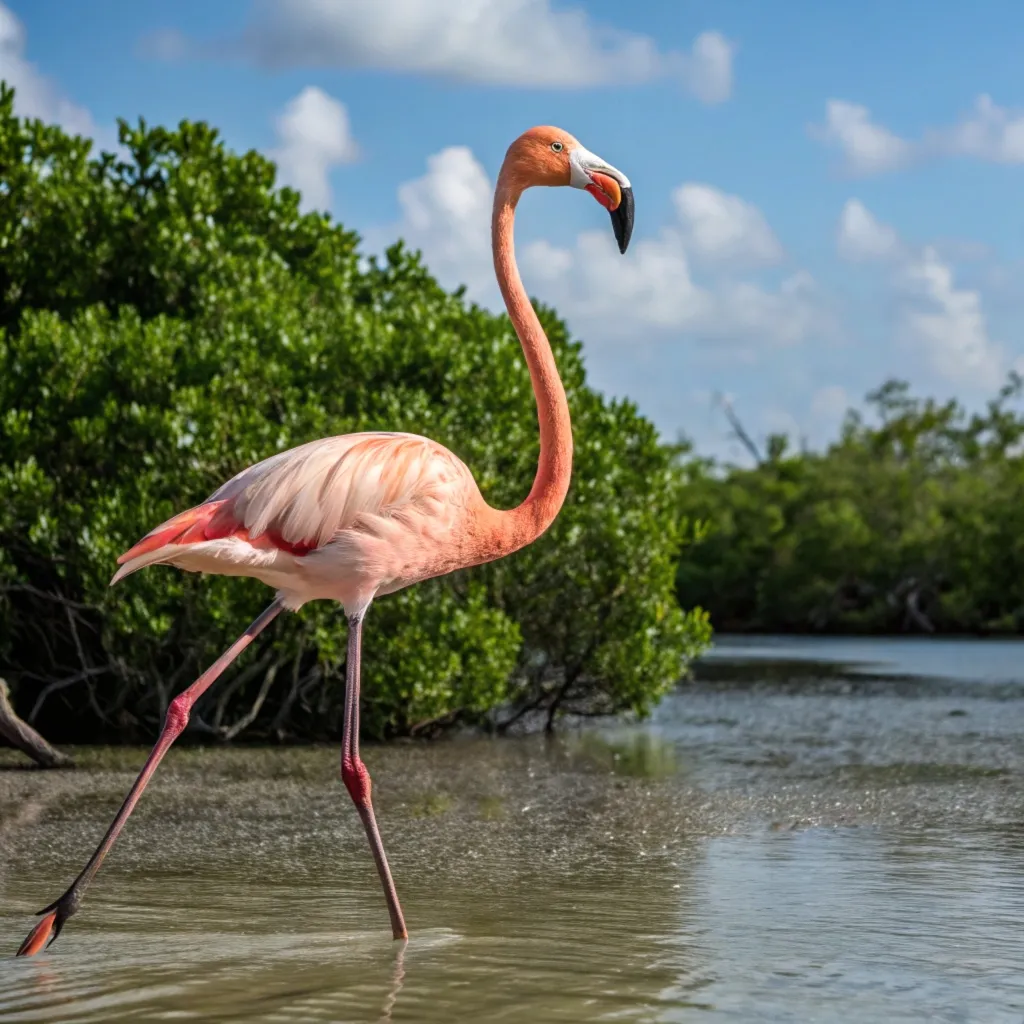Top 10 Most Stunning Birds Around the Globe
Birds captivate us with their beauty, diversity, and remarkable adaptations. This post explores the top 10 most stunning birds from around the world.
We will look at their unique features, habitats, and behaviors that make them stand out. From vibrant tropical species to elegant seabirds, these avian wonders showcase nature’s artistry.
Each bird on this list has special qualities that earn it a place among the most visually striking creatures on Earth. Let’s discover these feathered marvels and learn what makes them so extraordinary.

Key Takeaways
Before we dive into the details, here’s a quick overview of our top 10 list:
- Rainbow Lorikeet: Nature’s living palette
- Paradise Tanager: The rainforest’s crown jewel
- Kingfisher: Master of streams with dazzling hues
- Scarlet Macaw: A tropical vision in red and blue
- Golden Pheasant: The forest’s fiery apparition
- Resplendent Quetzal: Sacred beauty of Central America
- Peacock: India’s national bird with iconic plumage
- Blue Jay: North America’s azure guardian
- Lilac-breasted Roller: Africa’s colorful aerial acrobat
- Flamingo: Pink-hued waders of tropical waters
The world of avian beauty is vast and diverse, offering a stunning array of colors, patterns, and forms that never cease to amaze.
These top 10 birds represent just a fraction of the incredible diversity found in nature, each species adapted to its unique environment and ecological niche.
From the vibrant hues of tropical species to the more subtle elegance of temperate birds, this list showcases the remarkable range of avian aesthetics.
Rainbow Lorikeet: Nature’s Living Palette

The Rainbow Lorikeet is a true spectacle of color, embodying its name in every feather. This vibrant parrot species is native to Australia and nearby islands, boasting a kaleidoscope of hues that seem almost too vivid to be real.
Its plumage features a striking combination of deep blue, bright green, orange, and red, creating a visual feast for the eyes.
These small yet charismatic birds are not just beautiful but also highly intelligent and social. They form strong pair bonds and can often be seen in large, noisy flocks, their colorful presence lighting up the trees as they feed on nectar and pollen.
The Rainbow Lorikeet’s vibrant appearance is not just for show; it serves several important purposes in their natural habitat.
Their bright colors help them blend in with the colorful flowers and fruits they feed on, providing camouflage from predators.
Additionally, their striking plumage plays a crucial role in mate selection and social interactions within their flocks.
These energetic parrots are also known for their acrobatic abilities, often seen hanging upside down or in other precarious positions as they feed.
Their specialized brush-tipped tongue allows them to efficiently extract nectar from flowers, making them important pollinators in their ecosystem.
The Rainbow Lorikeet’s beauty and behavior make them a favorite among birdwatchers and nature enthusiasts alike.
Paradise Tanager: The Rainforest’s Crown Jewel

Aptly named, the Paradise Tanager is a small bird that packs a big visual punch. Found in the lush rainforests of South America, this avian gem sports a dazzling array of colors that seem almost unreal.
Its plumage features a vibrant mix of turquoise, lime green, golden yellow, and fiery red, making it stand out even in the colorful tapestry of its tropical home.
Despite its small size, typically measuring only about 14 cm, the Paradise Tanager’s striking appearance makes it one of the most sought-after sights for birdwatchers and nature enthusiasts. Its beauty serves as a vivid reminder of the incredible biodiversity found in the world’s rainforests.
The Paradise Tanager’s extraordinary coloration is a testament to the complex interplay between evolution and environment in tropical ecosystems.
These birds typically live in the canopy of rainforests, where their bright colors help them communicate with potential mates and establish territories amidst the dense foliage.
Their diet consists mainly of fruits and insects, making them important seed dispersers and contributing to the overall health of their forest habitat.
Despite their beauty, Paradise Tanagers face threats from habitat loss due to deforestation in their native range. Conservation efforts are crucial to ensure that future generations can continue to marvel at these living jewels of the rainforest.
The preservation of their habitat not only protects these stunning birds but also countless other species that call the South American rainforests home.
Kingfisher: Master of Streams with Dazzling Hues

The Kingfisher family boasts some of the most stunning birds in the world, with the Common Kingfisher being a particularly breathtaking example.
These birds are renowned for their brilliant blue and orange plumage, which creates a striking contrast against the backdrop of rivers and streams where they hunt.
Kingfishers are not just beautiful but also highly skilled hunters. Their long, sharp beaks and excellent eyesight allow them to dive with precision to catch small fish and aquatic insects.
The sight of a Kingfisher perched on a branch, its colors shimmering in the sunlight before it plunges into the water, is truly a spectacle of nature.
The Kingfisher’s remarkable hunting technique is as impressive as its appearance. These birds have the ability to adjust for light refraction when diving into water, allowing them to accurately pinpoint the location of their prey.
Their streamlined body and specially adapted eyes enable them to see clearly both above and below the water’s surface, making them efficient predators in their aquatic environment.
Beyond their hunting prowess, Kingfishers play an important role in riparian ecosystems. Their presence often indicates healthy waterways with abundant fish populations.
The burrows they dig into riverbanks for nesting can also provide homes for other species, contributing to the biodiversity of their habitats.
The Kingfisher’s beauty and ecological importance make them a symbol of the vital connection between land and water ecosystems.
Scarlet Macaw: A Tropical Vision in Red and Blue

The Scarlet Macaw is a large, majestic parrot that captivates with its vibrant red plumage complemented by striking cobalt blue and bright yellow feathers.
Native to the tropical rainforests of Central and South America, these birds are a symbol of the region’s rich biodiversity.
Measuring up to 90 cm in length, including their long tail feathers, Scarlet Macaws are as impressive in size as they are in color.
Their intelligence and ability to mimic human speech make them popular in aviculture, but their true beauty shines in their natural habitat, where they play crucial roles in seed dispersal and maintaining forest ecosystems.
The Scarlet Macaw’s vibrant coloration serves multiple purposes in its natural environment. Their bright feathers help them blend in with the colorful fruits and flowers of the rainforest canopy, providing camouflage from predators.
The intensity of their colors can also indicate the bird’s health and diet, playing a role in mate selection. These intelligent birds are known for their strong pair bonds, often mating for life.
In their native habitats, Scarlet Macaws are important seed dispersers, helping to maintain the diversity of rainforest plant species. Their powerful beaks allow them to crack open hard nuts and seeds that other animals can’t access.
However, habitat loss and illegal pet trade have led to population declines in some areas, making conservation efforts crucial for the survival of these magnificent birds.
Golden Pheasant: The Forest’s Fiery Apparition

The Golden Pheasant, also known as the Chinese Pheasant, is a vision of golden and scarlet splendor. Native to the forests of western China, this bird’s plumage is a masterpiece of nature’s artistry.
Males sport a vibrant golden crest, bright red body, and an elaborate tail that can reach up to two-thirds of their total length.
The contrast between the Golden Pheasant’s fiery colors and the green backdrop of its forest habitat creates a stunning visual effect.
Despite their bright coloration, these birds are surprisingly elusive, using their plumage as camouflage among the dappled light of the forest floor.
The Golden Pheasant’s striking appearance is a prime example of sexual dimorphism in birds, where males and females of the same species look markedly different.
While males boast their spectacular colors, females are much more subdued in appearance, with mottled brown feathers that provide excellent camouflage. This difference in plumage reflects their different roles in reproduction and survival.
Despite their beauty, Golden Pheasants face challenges in their native habitats due to deforestation and hunting.
However, their popularity in aviculture has led to the establishment of feral populations in various parts of the world, including the United Kingdom and North America.
These introduced populations offer unique opportunities for bird enthusiasts to observe these stunning creatures outside their natural range, while also raising questions about the impact of non-native species on local ecosystems.
Resplendent Quetzal: Sacred Beauty of Central America

The Resplendent Quetzal holds a special place in Central American culture and mythology. This bird’s beauty is so extraordinary that it was revered by ancient Mayan and Aztec civilizations as a sacred creature.
The male Quetzal boasts iridescent green plumage on its head, back, and wings, with a vibrant red breast and incredibly long tail feathers that can exceed a meter in length.
Found in the cloud forests of Central America, the Resplendent Quetzal’s beauty is matched by its importance as an indicator species for the health of its habitat.
Its stunning appearance and cultural significance make it one of the most sought-after sights for birdwatchers and nature enthusiasts alike.
The Resplendent Quetzal’s cultural importance extends far beyond its physical beauty. In ancient Mesoamerican cultures, the bird was associated with the feathered serpent god Quetzalcoatl and was seen as a symbol of freedom and wealth.
The long tail feathers of male quetzals were highly prized and used in ceremonial headdresses worn by royalty. Even today, the quetzal remains a powerful cultural symbol, featured on Guatemala’s flag and currency.
Despite its legendary status, the Resplendent Quetzal faces significant challenges due to habitat loss and fragmentation of cloud forests.
Conservation efforts focus on protecting these unique ecosystems, not only for the quetzal but for the myriad of other species that depend on these forests.
The quetzal’s beauty and cultural significance make it a powerful ambassador for conservation, highlighting the importance of preserving Central America’s rich biodiversity.
Peacock: India’s National Bird with Iconic Plumage

No list of beautiful birds would be complete without the Peacock, India’s national bird and a symbol of grace and beauty.
The male Indian Peafowl is renowned for its iridescent blue neck and breast, and the spectacular train of elongated upper tail feathers that it can fan out in a dazzling display.
This train of feathers, adorned with colorful eyespots, can reach up to 60% of the bird’s total length and is used in courtship displays.
The Peacock’s beauty has made it a popular subject in art, mythology, and culture across various civilizations, cementing its status as one of the world’s most stunning birds.
The Peacock’s elaborate tail is a prime example of sexual selection in evolution. The size, quality, and symmetry of a male’s train directly influence his mating success, with females preferring males with the most impressive displays.
Interestingly, recent research suggests that the eyespots on the train may also serve to confuse predators, providing an additional survival advantage.
Beyond their visual appeal, Peacocks play important roles in their ecosystems as seed dispersers and insect controllers. In many parts of India, they are considered sacred and are protected by religious customs.
However, habitat loss and poaching for their feathers continue to threaten wild populations. Conservation efforts focus on protecting their habitats and raising awareness about the importance of preserving these iconic birds for future generations.
Blue Jay: North America’s Azure Guardian

The Blue Jay is a familiar sight in North American forests and backyards, but its beauty is anything but ordinary. This intelligent corvid sports a vibrant blue crest and back, contrasted with white underparts and a black necklace.
The blue in its feathers is not due to pigment but rather to the structure of the feathers that scatter light in a way that appears blue to our eyes.
Beyond their striking appearance, Blue Jays are known for their intelligence and complex social behaviors. Their loud, distinctive calls and bold personality make them as captivating to observe as they are beautiful to behold.
The Blue Jay’s intelligence is evident in its diverse vocalizations and problem-solving abilities. These birds are known to mimic the calls of hawks, potentially to warn other jays of danger or to scare away competitors.
They also demonstrate remarkable memory skills, often remembering the locations of food caches for extended periods. This cognitive prowess, combined with their striking appearance, makes Blue Jays a favorite among backyard birdwatchers.
In their forest habitats, Blue Jays play a crucial role in ecosystem health. They are important dispersers of acorns and other tree seeds, contributing to forest regeneration.
Their alertness and loud calls also serve to warn other forest animals of approaching predators, earning them the nickname “forest sentinel“.
Despite their sometimes aggressive behavior at feeders, Blue Jays are an integral and beautiful part of North American biodiversity.
Lilac-breasted Roller: Africa’s Colorful Aerial Acrobat

The Lilac-breasted Roller is a vision of pastel beauty found in the savannas and open woodlands of sub-Saharan Africa.
This bird’s plumage is a delightful mix of colors, featuring a lilac breast, blue underbelly, olive head, and turquoise wings and tail. Its name comes from its habit of performing aerial acrobatics during courtship displays.
As Kenya’s national bird, the Lilac-breasted Roller is not only beautiful but also culturally significant. Its wide distribution across Africa makes it a common sight on safaris, where its colorful presence adds a vibrant touch to the landscape.
The Lilac-breasted Roller’s aerial displays are as impressive as its coloration. During courtship, these birds perform spectacular rolling and diving maneuvers, showcasing their agility and the full spectrum of their beautiful plumage.
These displays not only serve to attract mates but also to establish and defend territories from rival birds. Despite their beauty, Lilac-breasted Rollers play a vital role in their ecosystems as insect controllers.
They are skilled hunters, often perching on prominent branches to spot prey before swooping down to catch insects, small reptiles, or even rodents.
Their presence in an area can be an indicator of a healthy, diverse insect population, making them important bioindicators of ecosystem health in African savannas and woodlands.
Flamingo: Pink-hued Waders of Tropical Waters

The Flamingo is perhaps one of the most recognizable birds in the world, known for its distinctive pink plumage and unique shape.
These large wading birds are found in tropical and subtropical regions around the globe, often in large flocks that create stunning pink vistas against blue waters.
The Flamingo’s pink color comes from the carotenoid pigments in the algae and small crustaceans that make up their diet.
Their long necks, curved bills, and iconic stance make them not only beautiful but also highly adapted to their specific feeding habits in shallow waters.
The Flamingo’s distinctive appearance is the result of millions of years of evolution, perfectly adapted to their unique lifestyle. Their long legs allow them to wade in deep water, while their curved necks enable them to feed with their heads upside down.
The specialized filter-feeding mechanism in their beaks allows them to extract tiny organisms from the water, which not only provides nutrition but also contributes to their iconic pink coloration.
Flamingos are highly social birds, often gathering in massive flocks that can number in the millions. These large congregations serve multiple purposes, including protection from predators and creating optimal breeding conditions.
The sight of thousands of flamingos taking flight, creating a sea of pink against the sky, is one of nature’s most spectacular displays.
Despite their adaptability, many flamingo species face threats from habitat loss and pollution, making conservation efforts crucial for their long-term survival.
FAQs
What makes birds so colorful?
Birds owe their vibrant colors to pigments like carotenoids (from diet) and structural coloration (light refraction through feather microstructures).
Where can I see these stunning birds?
Many of these birds can be observed in their natural habitats such as rainforests (Scarlet Macaw), wetlands (Flamingo), or even urban areas (Blue Jay). Eco-tourism offers great opportunities!
Are any of these birds endangered?
Yes! Birds like the Hyacinth Macaw and Victoria Crowned Pigeon face threats from habitat loss and hunting. Conservation efforts are crucial for their survival.
Why do birds have such elaborate plumage?
Elaborate plumage often serves purposes like attracting mates (e.g., Peacock) or camouflaging within environments (e.g., Golden Pheasant).

Joyce is the passionate founder of Chirping Hearts, a website dedicated to sharing her love for birds and providing valuable information about avian life. With a background in ornithology and years of experience in birdwatching, Joyce aims to inspire others to appreciate the beauty and diversity of birds. Through her engaging articles and guides, she hopes to foster a community of bird enthusiasts who share her enthusiasm for these incredible creatures. When she’s not writing, Joyce enjoys exploring nature trails and observing birds in their natural habitats.







